neet biology mcq test sample with answers
■ lesson-1 reproduction in organism
* introduction :- hi guys in this article you know about neet biology mcq test sample with answers and students might be busy in your preparation for coming 12th board Jharkhand academic Council exams. biologysir.com will provide many type of education material like fill in the blanks, true or false matching type questions ,multiple choice questions, very short questions answers type, short questions answer type and long questions type of 12th class Biology from each topic that help you in your preparation.neet biology mcq test sample with answers helps you in your preparation.biologysir provides preparation for neet biology, neet biology questions ,neet Biology books neet Biology mock test and multiple choice questions for biology provide in each and every lesson.
■ you should also visit
1) matching type question sample -1
2) biology class 11th and 12th all full forms
Table of Contents
mcq test sample in biology for neet exam
-
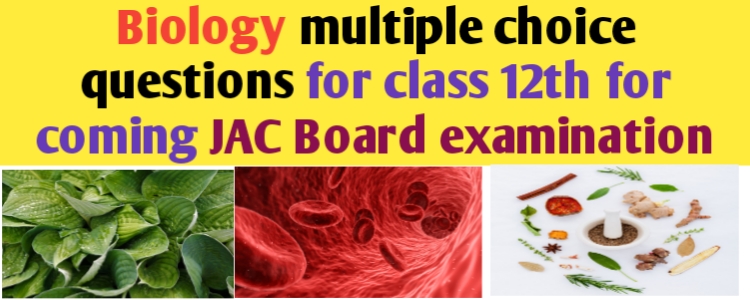
- MCQs test sample-1 in biology for class 12th-JAC Exams
*In this post :- we provide you MCQs test sample with answer from the lesson 1 reproduction in organism.
multiple choice questions in biology
Lifespan of Animals
1)lifespan of parrot is following:-
A)100-150 years
B)150 years
C)90 years
D)120 years
Ans. B
2) lifespan of tortoise are:-
A)150 years
B)100 years
C)100-150 years
D)70 years
Ans. C
Note-explanation:- the period from birth to the natural death of an organism.lifespan of housefly is 1-4 months, elephant is 70-90 years, dog is 16-18 years,ostrich is 50 years, jellyfish is 1 years, leech is 20 years, horse is 30-40 years, rat is 2-3 years, man is 60-80 years, butterfly is 1-2 wks, parrot is 150 years, crocodile is 60 years and squirrel is 6-8 years.
neet biology mcq test sample with answers
Asexual reproduction
3) asexual reproduction is:-
A) uniparental reproduction
B) biparental reproduction
C) both A and B
D) none
Ans. A
4) nature of Clones is:-
A) genetical similar
B) morphological similar
C) genetical and morphological similar
D) none
Ans. C
5) binary fission founds in following:-
A) hydra
B) spongilla
C) spirogyra
D) amoeba
Ans. D
6) multiple fission found in following:-
A) amoeba
B) plasmodium
C) spirogyra
D) penicillium
Ans. B
7) fragmentation is found in following:-
A) hydra
B) penicillium
C) planaria
D) spirogyra
Ans. D
8) external budding is found in following:-
A) spongilla
B) hydra
C) Rhizopus
D) amoeba
Ans. B
9) internal budding is found in following:-
A) Rhizopus
B) spongilla
C) spirogyra
D) plasmodium
Ans. B
10) Regeneration is found in following:-
A) penicillium
B) plasmodium
C) amoeba
D) planaria
Ans. D
11) spore formation is found in following:-
A) Rhizopus
B) planaria
C) spirogyra
D) Sea-anemones
Ans. A
Note- explanation:- asexual reproduction is that type of Reproduction in which no formation and fusion of gametes .generally it has binary fission Multiple Fission budding spore formation fragmentation process.
◆you should also visits our website https://biologysir.com and other website for civil engineer calculation at civilsir.com
■ follow on YouTube
Objectives questions in Vegetative reproduction
12) vegetative reproduction in sweet potato by which of following:-
A) roots
B) stem
C) leaves
D) none
Ans. C
13) vegetative reproduction in potato tuber by which of following :-
A) root
B)stem
C)leaves
D)none
Ans. B
14) vegetative reproduction in bryophyllum by which of following:-
A) root
B)stem
C)leaves
D)none
Ans. C
15) vegetative reproduction in sugarcane by which of following :-
A)Cutting
B)grafting
C)layering
D)tissue culture
Ans. A
16) vegetative reproduction in mango by which of following:-
A)Cutting
B)grafting
C)layering
D)tissue culture
Ans. B
17) vegetative reproduction in Jasmine by which of following
A)Cutting
B)grafting
C)layering
D)tissue culture
Ans. C
18) vegetative reproduction in Dahlia by which of following
A)Cutting
B)grafting
C)layering
D)tissue culture
Ans. D
Note-explanation:- vegetative reproduction is the process of multiplication in which one portion of fragments of plant body develop into new individual. Vegatative reproduction have two methods natural methods and artificial methods, natural methods by root stem and leaf and artificial method by cutting layering grafting and tissue culture.
mcq in sexual reproduction
19) unisexual condition in fungi is known as
A) Homothallic
B) heterothallic
C) hermaphrodite
D) none
Ans . B
20) bisexual condition in fungi is known as
A) Homothallic
B) heterothallic
C) hermaphrodite
D) none
Ans. A
21) flower bear both male and female reproductive organ known as
A) Homothallic
B) heterothallic
C) hermaphrodite
D) none
Ans. C
22) A plant have both male and female flower termed as
A) monoecious
B) dioecious
C) homothallic
D) heterothallic
Ans. A
23) when male and female flower present on different plant termed as
A) monoecious
B) dioecious
C) homothallic
D) heterothallic
Ans. B
24) male flower known as
A) pistilate flower
B) staminate flower
C) calyx
D) corolla
Ans. B
25) female flower known as
A) pistilate flower
B) staminate flower
C) calyx
D) corolla
Ans. A
26) which of following is monoecious plant
A) papaya
B) mulberry
C) data palm
D) maize
Ans. D
27) which of following is dioecious plant
A) maize
B) mango
C) papaya
D) castor
Ans. C
28) which of following is unisexual animal
A) tapeworm
B) earthworm
C) sponge
D) cockroach
Ans. D
29) which of following is bisexual animal
A) sepia
B) cockroach
C) earthworm
D) starfish
Ans. C
30) which of following is micro gametes:-
A) sperm
B) ovum
C) both A and B
D) none
Ans. A
31) which of following is macro gametes:-
A) sperm
B) ovum
C) both A and B
D) none
Ans. B
32) fusing of two garments which are morphologically and physiological is similar to each other is known as :-
A) isogamy
B) anisogamy
C) hologamy
D) conjugation
Ans. A
33) fusing of two garments which are morphologically and physiological is different to each other is known as :-
A) isogamy
B) anisogamy
C) hologamy
D) conjugation
Ans. B
34) when two organism themselves act as gamets known as
A) isogamy
B) anisogamy
C) hologamy
D) conjugation
Ans. C
35) pairing of two parents for the exchange of of their male pronuclei is known as
A) isogamy
B) anisogamy
C) hologamy
D) conjugation
Ans. D
36) plant which produce flowers only once in their lifetime are known as :-
A) monocarpic
B) polycarpic
C) both A and B
D) none
Ans. A
37) the plant which flower every year after attaining certain maturity are known as
A) monocarpic
B) polycarpic
C) both A and B
D) none
Ans. B
38) which of following is monocarpic plant
A) bamboo plant
B) mango plant
C) Neem tree
D) gauva tree
Ans. A
39) which plant produces flower once in 12 years
A) neelakurenji
B) bamboo tree
C) both A and B
D) none
Ans. A
40) which of the following has oestrous cycle
A) monkey
B) man
C) apes
D) tiger
Ans. D
41) which of following is virgin birth known as
A) asexual reproduction
B) sexual reproduction
C) parthenogenesis
D) none
Ans. C
42) fertilized larvae fed on Royal jelly develop into
A) worker
B) Queen
C) drones
D) none
43) unfertilized egg develop into
A) worker
B) Queen
C) drones
D) none
Ans. C
44) sterile female is
A) worker
B) Queen
C) drones
D) none
Ans. A
45) which of pollen grain causes allergy
A) maize
B) parthenium
C) doob grass
D) none
Ans. B
46) which is father of modern embryology
A) Aristotle
B) W. Raux
C) Von Bear
D) Newport
Ans. C
47) Smallest flower
A) wolfia
B) agave
C) rose
D) rafflesia
Ans. A
48) longest flower
A) wolfia
B) agave
C) rose
D) rafflesia
Ans. D
49) vegetative propagation in Pistia occures
A) stolon
B) offset
C) Runner
D) sucker
Ans. B
50) development of fruit without fertilization is called as
A) cell division
B) cell culture
C) parthenocarpy
D) parthenogenesis
Note-explanation :- sexual reproduction in which there is a formation and fusion of sex cell called as gametes and development of an organism from the zygote through embryo formation is known as embryogenesis.
MCQs test sample-1 in biology for class 12th-JAC Exams

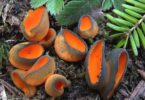
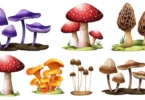
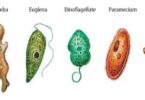
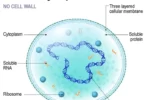
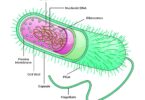
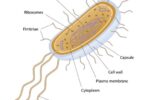
Leave a Comment